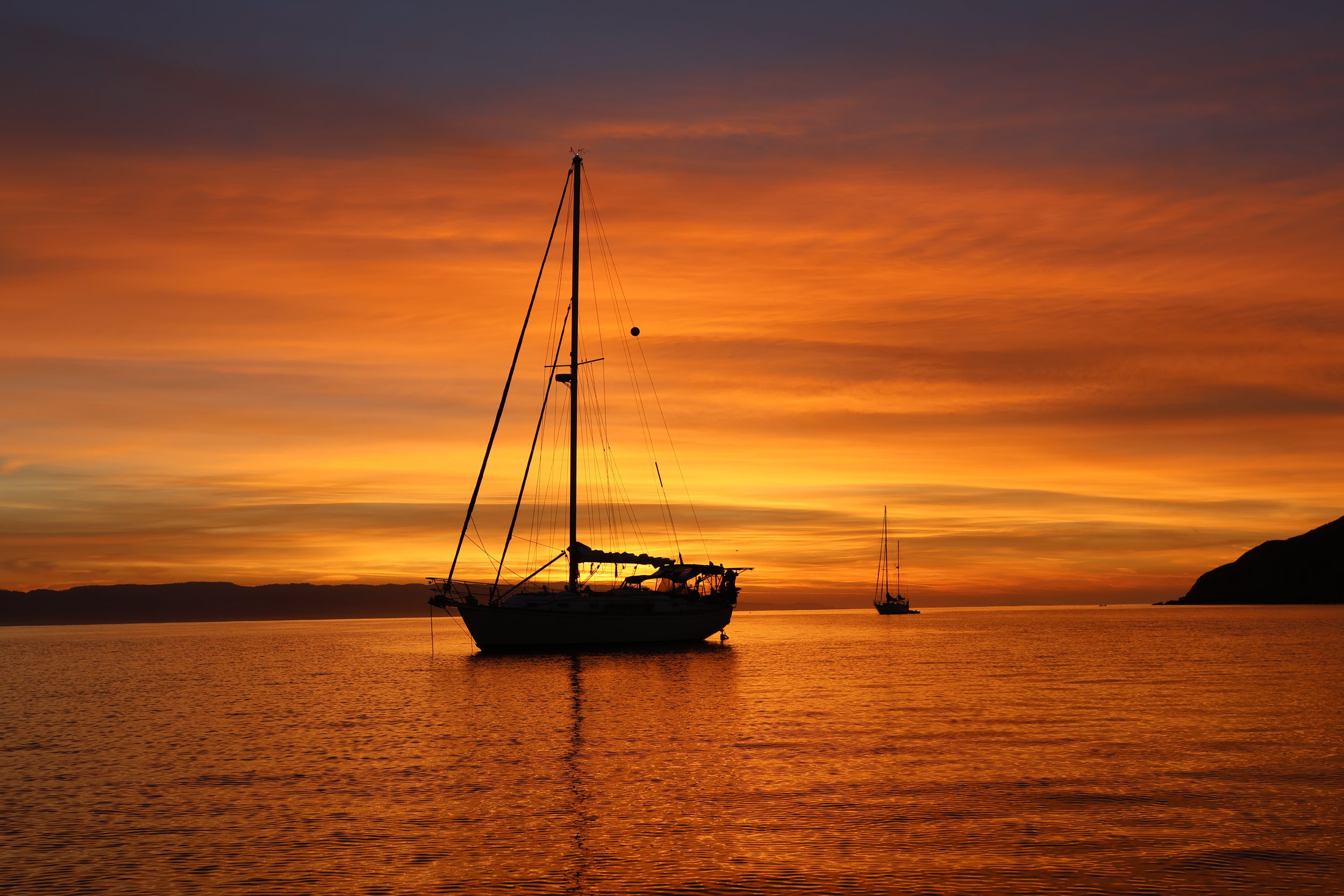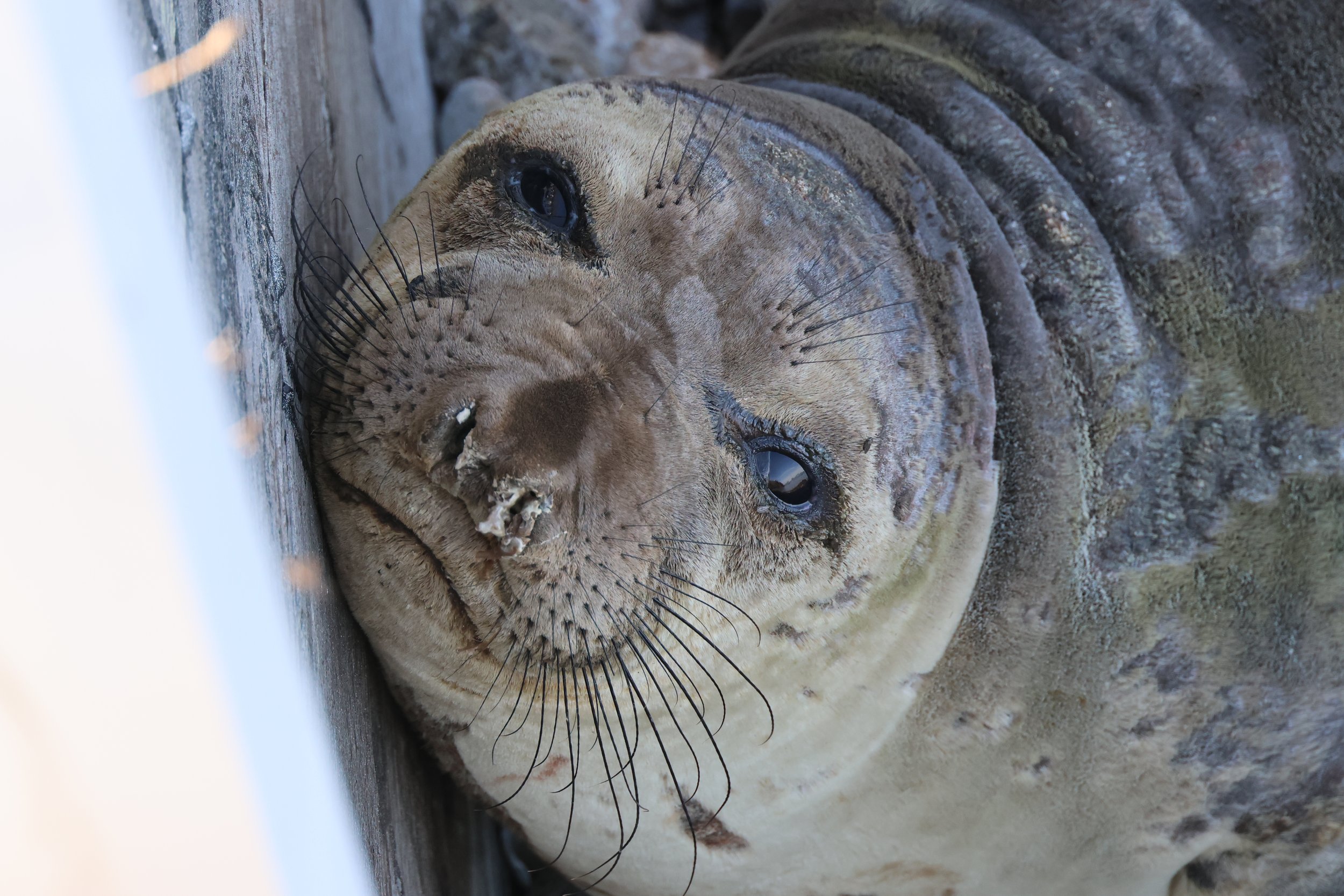Astoria to San Francisco Bay
The ideal time to sail south from the Pacific Northwest is July through September. We departed Astoria at the tail end of the season, and by the time we left Newport, two weeks later, we were officially in the off-season. As a result, we made our trip in short hops, taking advantage of small breaks in otherwise rough weather to make progress south. We often felt discouraged by the forecasts and even worried that we might not make it south this year, having met sailors who had opted to ride out the winter and sail south the next season.
Sailing this stretch of the Pacific has its challenges even in the best season. There are few safe ports, and almost all require a bar crossing. A coastal bar is where a river or lake joins the ocean and sediment and sand build up to create a shallow area, which causes steep and often breaking waves that can be very hazardous. It is common for the Coast Guard to declare a bar unsafe for small vessels to cross, or completely impassable. When there are no restrictions in effect, it is still necessary to time one’s crossing with the current and tide, often leaving a window of only a few hours during daylight when it is safe to cross. Many sailors choose a route south that goes far offshore, skipping the ports and heading straight for San Francisco Bay, or stopping only once, often in Crescent City, where there is no bar to cross. In the off-season, this route is not a good option unless you are a highly experienced sailor, prepared to deal with very rough conditions. We did our best to have patience as we waited for fair conditions and to remind ourselves to enjoy being right where we were.
We departed Astoria the morning of September 16th. We had good conditions crossing the Columbia River Bar and were full of excitement as we made “the big left turn.” Finally, we were headed south! The winds were light, and the seas rolly, but it was a clear, sunny day followed by a beautiful star-filled night. We alternated three-hour shifts (watches) at the helm. Excitement to be at sea and the constant rolling of the boat made it hard to get much sleep, and we arrived in Newport the next morning, elated and exhausted.
Newport is a great little town. We spent our first few days in the marina, doing laundry, shopping, walking around town and playing with Desi on the beach. My mom drove down, and we had a lovely visit with her. There was rough weather in the forecast, so we found a place to anchor to wait it out. We had some of the roughest weather we’ve experienced at anchor that week and spent several days inside being rocked around as if we were at sea. When the storm passed, we explored upriver in the dinghy, stopping at an oyster farm and having lunch in the waterfront park in Toledo. The next day we headed to a marina for a night so we could catch a friend of Karl’s who was in town and stock up on provisions before heading back out to sea.
The trip to Coos Bay was our roughest. We departed in thick fog and rain and soon we were slamming into steep waves that shook the whole boat. Desi hid away frightened, and Karl was seasick before long. When the sun set, it was so dark that there was no distinction between water and sky. I spent half the night braced in the cockpit, squinting at an imagined horizon line to stay oriented and fend off nausea. The only waves visible were the ones illuminated by the green and red lights on the bow of the boat as it plunged into them. I kept watch for the first half of the night to give Karl time to rest and recover. When he was feeling better, he took over and I rested into the morning hours. During his watch, Karl noticed that the slamming motion of the boat had caused a puncture to our new dinghy, despite all our efforts to secure it. We crossed into Coos Bay just after noon and tied up in Charleston marina feeling relieved, queasy, and a bit beaten. At that moment it was hard to imagine that we would ever be ready to leave solid ground again.
There wasn’t much to do in Charleston, but we enjoyed a few days there. We walked to some beautiful beaches and took the bus into Coos Bay for a day to explore. Karl repaired the dinghy and soon we had a good weather window and prepared to depart. The trip to Crescent City was a huge relief after the previous one. The trip was foggy, but the seas were calm and we were able to move around the boat without bracing for every wave. We saw a couple of whales, a small shark, and many porpoises and seals. The only challenge was navigating around the fishing vessels, some of which were trailing gear as far as a mile back, creating a moving obstacle course for us to navigate. The night was completely black and around one in the morning I noticed glowing shapes darting through the water, like shooting stars. There was phosphorescence in the water and whenever a dolphin, seal, or large fish swam past the boat, I could see its shape glowing like it was under a blacklight! I spent hours staring into the water and even saw a huge glowing mass that must’ve been a whale. It was a surreal and magical experience. We were in high spirits that morning as we made our entrance into Crescent City through the fog.
Crescent City has beautiful beaches near the marina and we enjoyed exploring for a few days, but once we were rested and stocked up on provisions, we were itching to move on. The weather was getting cold and rainy and we were eager to get further south, but the forecast looked rough for a couple of weeks. We found one day where the conditions were calm and determined that if we left at 4am, we could make the Humboldt Bay Bar at the right time and get into Eureka just before dark. We departed under star filled skies, navigating around rocks and jetties that were invisible in the darkness and soon an incredible sunrise filled the sky. The trip was mostly calm, but in the afternoon the waves got steeper and once again we were forced off course to avoid a span of fishing vessels and their nets. This added time to the trip and had us pushing to arrive before dark. We made the bar just after sunset, in fog and rain, and tied up in Eureka under the light of headlamps.
Eureka was home for two weeks. We enjoyed the historic downtown area and took the bus into Arcata for a day to hike in Redwood Park and check out the shops in town. We spent our mornings applying for jobs and analyzing weather forecasts. Just south of Eureka is Cape Mendocino, an area infamous for its hazardous sailing conditions and requiring extra caution in our weather planning. Karl went to the Eureka NOAA station and they were incredibly helpful and generous with their time, offering great advice about the area and choosing the right weather window. A few days later, Troy, the head meteorologist and a sailor himself, brought us to the station and gave us an hour-long presentation on waves. He even offered to lend us his car! After two weeks, we finally got a favorable forecast and we set off for Drake’s Bay, an anchorage 20 miles north of San Francisco.
A beautiful trip to Drake’s BayThe trip to Drake’s Bay was wonderful. We departed before sunrise, under the light of a full moon. The sunrise was incredible, and the seas were calm enough that I was able to get several hours of sleep. The moon gave us amazing visibility through the night and during the day we saw sunfish, seals, dolphins and more whales than we could count. We entered Drake’s Bay at sunset, anchored, and rowed Desi to shore before watching a beautiful moonrise. The next day we hiked Point Reyes for some amazing views and met the crew of a neighboring boat who shared some local knowledge of the area. We discovered that the patch on our dinghy was leaking, so the following day we stayed aboard and spent the day reading, listening to audiobooks and photographing the pelicans surrounding the boat. It was lovely to be in such a naturally beautiful place after spending so much time in marinas.
The next morning, November 2nd, we departed for San Francisco Bay. I was bursting with excitement as we neared the Golden Gate Bridge. I was nervous about the vessel traffic, but we had a clear approach to the bridge. Once past the bridge, the traffic got trickier, as vessels of all sizes and speeds crossed the bay in different directions. Karl navigated through it all perfectly, while I kept a lookout and snapped photos. It felt monumental to have brought our home so far and to be navigating it into this major port. Many times, during this trip, it felt intimidating to realize how inexperienced we are and how much we have yet to learn, but at moments like this, it hits home how much we’ve learned and how far we’ve come. We made our way into Oakland and tied up in Jack London Square. A few hours later, my sibling Salimatu arrived to give us a long-awaited welcome to the Bay. We made it!















































